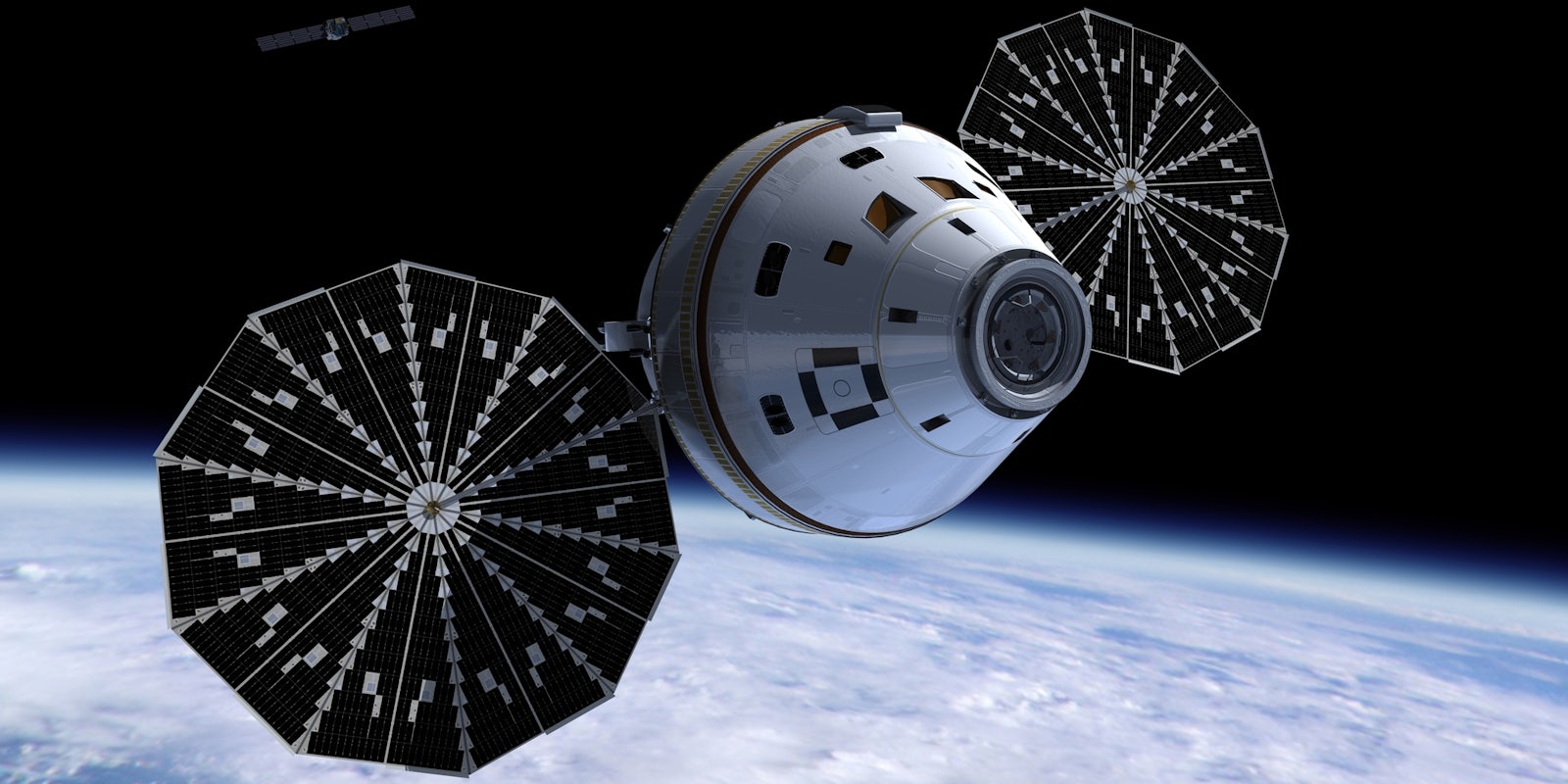NASA’s Orion capsule splashed down into the Pacific Ocean on Friday, after a successful test flight into orbit.
As an unmanned expedition that lasted just 4.5 hours, it’s deceptively easy to dismiss Orion as overhyped when compared to, say, landing a robot on Mars. But if you make that kind of assumption, you’re missing out. Orion is an exciting development for human space travel—a step beyond the many automated robotic probes we’ve seen over the past few years.
Since the Apollo Moon landings more than 40 years ago, we’ve set up several orbiting space stations and numerous satellites, and started to explore Mars with unmanned probes. But as the space race becomes a distant memory and NASA’s budget continues to shrink, interest in space travel has dwindled.
Amazing visuals of #Orion‘s return from @NASAArmstrong Ikhana aircraft. pic.twitter.com/psYbvyxvxP
— Orion Spacecraft (@NASA_Orion) December 5, 2014
Congrats #Orion! We’re one step closer to bootprints next to these rover tracks. #JourneyToMars pic.twitter.com/1l51sQwpMh
— Curiosity Rover (@MarsCuriosity) December 5, 2014
While astronauts have started to drum up support by tweeting and filming their lives in the International Space Station, agencies like NASA and the ESA have made sure that information about new space missions is as accessible as possible. Robotic probes get their own cute, anthropomorphised social media accounts, and NASA has made every effort to turn Orion’s launch into an international media event. As it should be, because NASA hopes to use the Orion capsule for several missions into deep space, hopefully with a human crew.
Now this test flight has been completed, Orion’s next job is a seven-day journey circling the Moon, scheduled for 2018. This will be another uncrewed flight, but its next mission after that (known as Exploration Mission 2, or EM-2) will send humans outside low Earth orbit for the first time since the Moon landings. EM-2 will see a team of astronauts study a “captured” asteroid in lunar orbit, in a mission that NASA hopes will take place “as early as 2021.”
With all current manned space flights confined to low Earth orbit and the International Space Station, the Orion program is a return to the kind of space travel that really gets people excited: Manned missions into deep space. After EM-2, NASA’s roadmap points toward more missions to near-Earth asteroids, culminating in a manned journey to Mars. That’s right, Mars. Right now, the Orion program is basically working to turn science fiction into reality.
Photo via NASA


